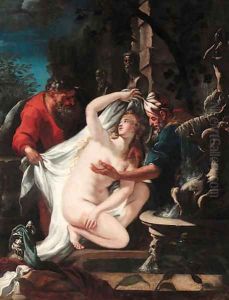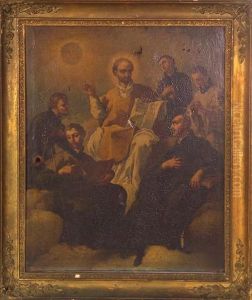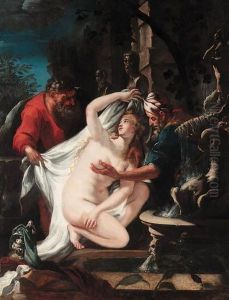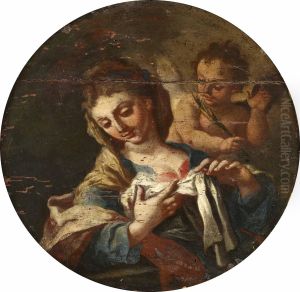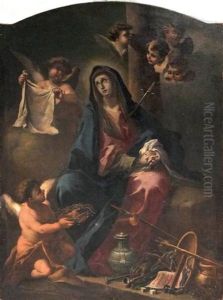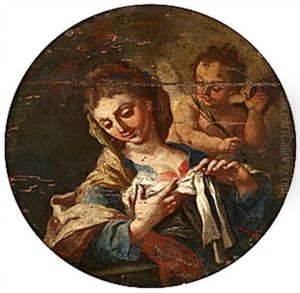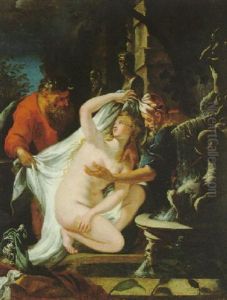Domenico Guarino Paintings
Domenico Guarino was an Italian painter and fresco artist of the Baroque period, born in the year 1678 in Sant'Agata de' Goti, a small town in the province of Benevento, Campania, Italy. He was part of a family of artists, as his father, Lorenzo Guarino, was also a painter. Domenico first learned the basics of painting from his father, who was his initial teacher and mentor.
Guarino's work is characteristic of the late Baroque style, with its emphasis on dramatic effects, movement, and vivid coloration. He became known for his religious works, including altarpieces and frescoes for churches, as well as for his mythological and historical compositions. Although not as widely known as some of his contemporaries, Guarino contributed significantly to the artistic landscape of Southern Italy during his lifetime.
Despite the limited documentation on Guarino's life, it is known that he had a successful career that allowed him to work in various cities outside his hometown. He was active in the area around Naples and was involved in the decoration of several churches in Campania. His frescoes often featured a sense of dynamism and an ability to convey emotion through the gestures and expressions of his figures.
Domenico Guarino continued to work and receive commissions up until his death in 1753. His artistry was passed on through his works, which can still be admired in the churches and palaces where they remain to this day. Although his name may not resonate as loudly as some of the leading figures of the Baroque movement, Guarino's contributions to Italian art are preserved in the rich visual heritage of the region.
